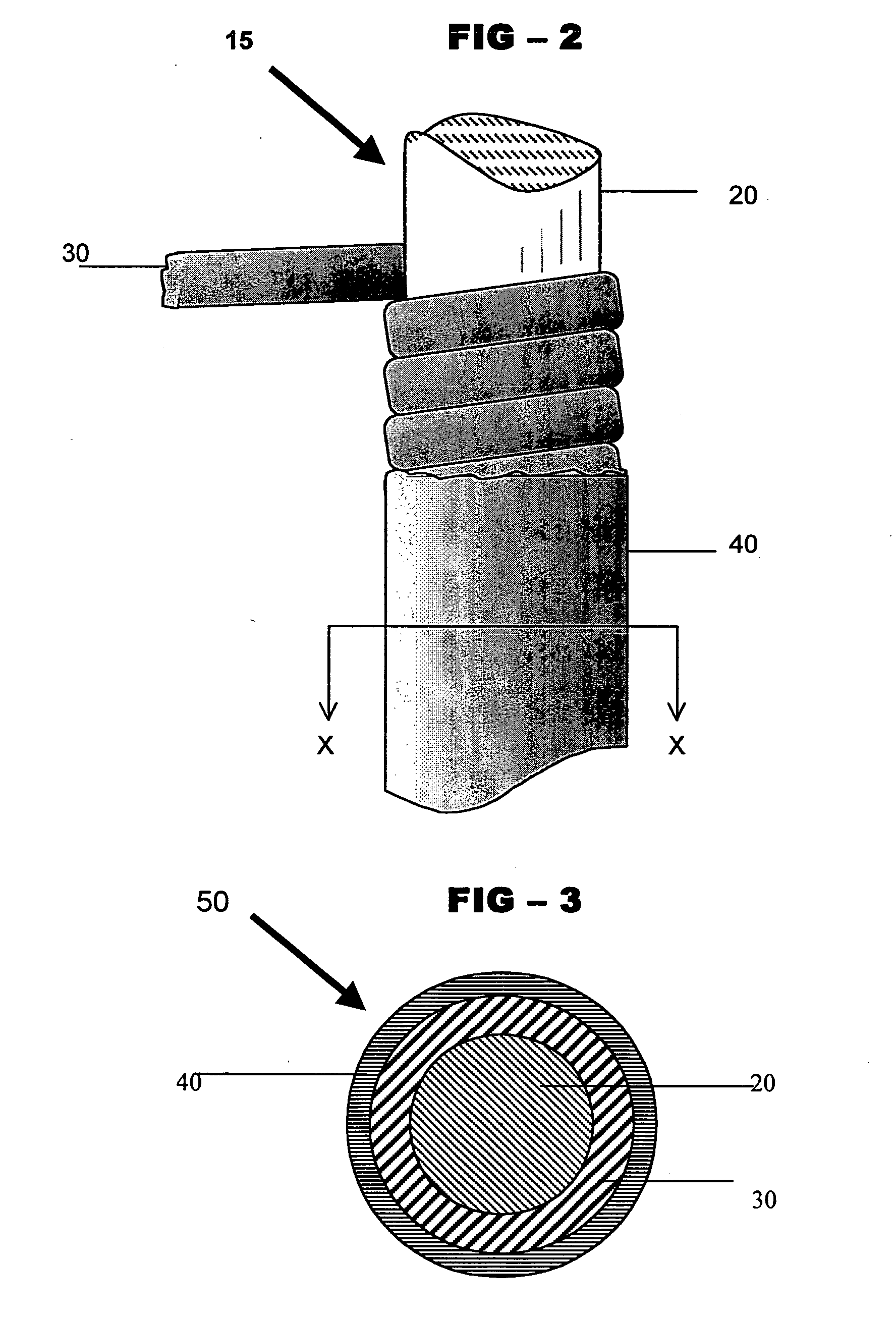Flexible conducting thread
a conducting thread and flexible technology, applied in the direction of power cables, electromagnets, yarns, etc., can solve the problems of not providing much flexibility, not supporting the need very well, and it is difficult to use the existing one for wearable electronics medical science,
- Summary
- Abstract
- Description
- Claims
- Application Information
AI Technical Summary
Benefits of technology
Problems solved by technology
Method used
Image
Examples
Embodiment Construction
[0033] With reference to the drawings and particularly FIG. 1 describes the sequence of process steps 1 to be followed for manufacturing flexible conducting thread. The sequence of process describes material selection 2 of identifying non-conductive core filament and conductive filament, wrapping process 3 to wrap the conductive filament over non-conductive core filament, electroplating process 4 to coat conductive metal on the surface of the conductive sheath, selection of number of conductors 5 to determine number of conductors to be used for flexible conductor assembly, parallel winding process 6 and Two for One twisting process 7 to increase the strength of the flexible conducting thread, insulation process 8 to protect conductive layer and produce flexible conducting thread 9 as per predefined requirements.
[0034] The method of manufacturing a flexible conducting thread starts from material selection of non-conductive core filament 20 and conductive filament 30. Polyester and C...
PUM
| Property | Measurement | Unit |
|---|---|---|
| diameter | aaaaa | aaaaa |
| diameter | aaaaa | aaaaa |
| thickness | aaaaa | aaaaa |
Abstract
Description
Claims
Application Information
 Login to View More
Login to View More - R&D
- Intellectual Property
- Life Sciences
- Materials
- Tech Scout
- Unparalleled Data Quality
- Higher Quality Content
- 60% Fewer Hallucinations
Browse by: Latest US Patents, China's latest patents, Technical Efficacy Thesaurus, Application Domain, Technology Topic, Popular Technical Reports.
© 2025 PatSnap. All rights reserved.Legal|Privacy policy|Modern Slavery Act Transparency Statement|Sitemap|About US| Contact US: help@patsnap.com



